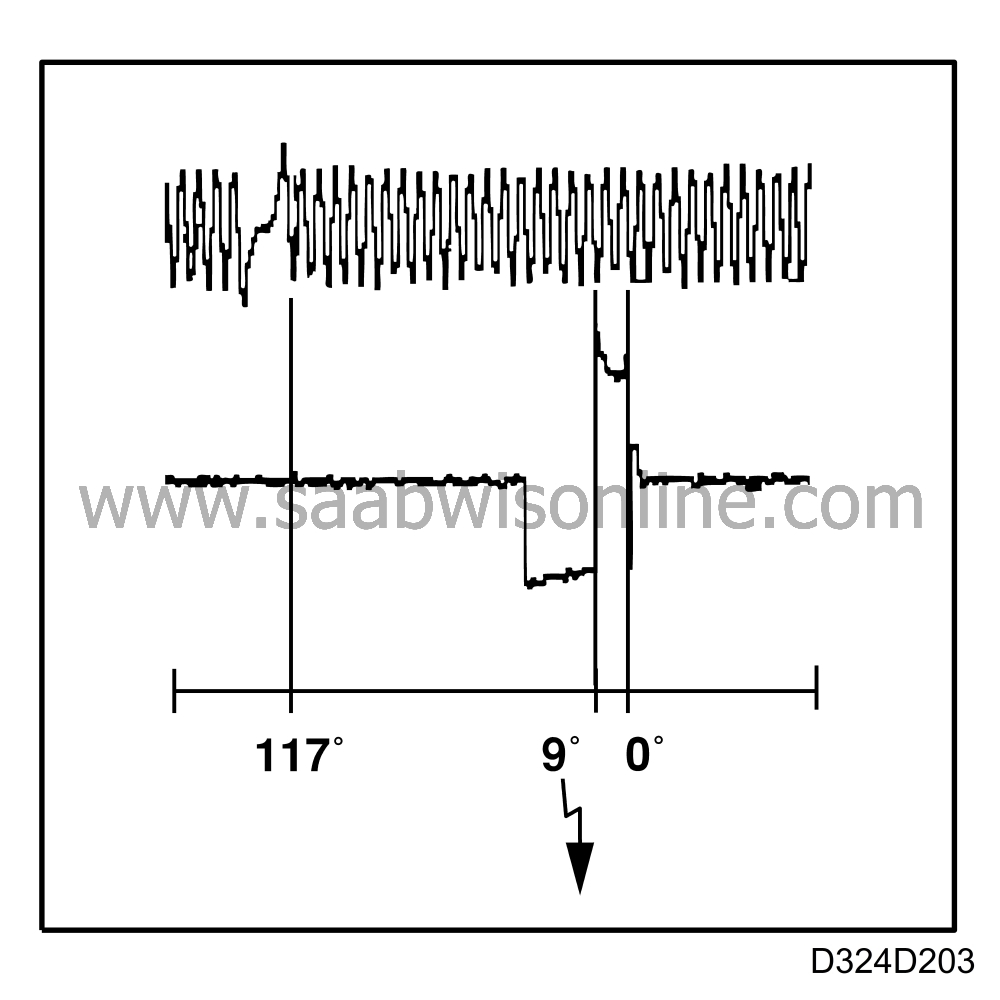Ignition timing
| Ignition timing |

Ignition coil
The ignition coil in the Motronic 4.1 engine management system is of conventional design for an inductive ignition system. The ignition coil generates high tension current which at full engine load (wide open throttle) amounts to about 30,000 V.The ignition coil is controlled by the ignition output stage, which in the Motronic engine management system is integrated into the control module, via pin 25 of the control module.
The ignition coil has two connectors with pins 15 and 1, but only one connector is used.
The distributor supplies the spark plugs with high tension current, i.e. it determines which of the cylinders is to fire.
Ignition control
During starter motor cranking and at engine speeds up to about 520 rpm the control module utilizes a fixed ignition advance of 5° BTDC. At speeds above about 520 rpm and when the throttle position sensor indicates idling speed, the control module follows a timing program with a fixed ignition advance of about 9° BTDC if the engine is running under no-load conditions.The ignition timing is dependent on engine load and speed when the car is being driven, just as it is when the engine is running at idling speed.
When the engine is labouring under a heavy load, a special timing angle matrix is used to reduce the risk of knocking.
The cam angle is controlled by the speed of the engine so that the highest possible ignition energy is always obtained with the least possible generation of heat in the ignition coil.
If engine speed drops, as might happen when the radiator fan cuts in, the ignition advance is increased by a maximum of 3° to increase engine torque and so bring engine rpm up to what it was before.
Similarly, the ignition is retarded by a maximum of 3° if engine rpm increases. Ignition control at idling rpm takes care of rapid changes in engine idling speed.




